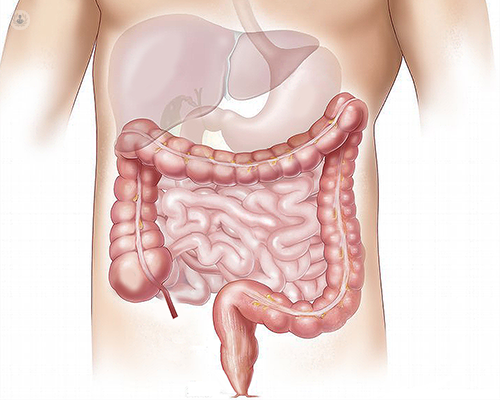What are gallbladder polyps?
Written by:Gallbladder polyps are growths that form on the inner lining of the gallbladder. Although most are benign, some gallbladder polyps may harbour malignancy.
Here, Dr Charis Kyriakides, renowned consultant general and upper GI surgeon based in London, offers his expert insight into gallbladder polyps.

What are gallbladder polyps?
Gallbladder polyps are small, abnormal tissue growths that form on the inner lining of the gallbladder, a small organ located beneath the liver. These growths can vary in size and shape, and they may be attached to the gallbladder wall by a stalk or they may be sessile (without a stalk).
Are all gallbladder polyps cancerous?
Most gallbladder polyps are benign and don’t develop into cancer. However, some gallbladder polyps may have the potential to become cancerous over time, especially if they are large or they increase in size.
Regular monitoring is crucial to assess the nature of the gallbladder polyps and determine the most appropriate course of action.
How are gallbladder polyps detected?
Gallbladder polyps are often asymptomatic, meaning they don’t cause noticeable symptoms.
When symptoms do present, these may include:
- Abdominal pain: Persistent pain in the upper abdomen.
- Nausea and vomiting: Especially after meals.
- Changes in bowel habits: Such as constipation or diarrhoea.
Gallbladder polyps are typically discovered incidentally during imaging studies conducted for other medical reasons.
Common imaging studies for gallbladder polyps include:
- Ultrasound: An ultrasound is the most common and widely-used imaging test for detecting gallbladder polyps.
- CT scan: A CT scan provides detailed cross-sectional images of the abdomen, including the gallbladder, to help identify the presence of gallbladder polyps or exclude other pathology.
- MRI scan: An MRI scan uses magnetic fields and radio waves to generate detailed images of the internal organs. It is particularly useful for assessing the soft tissues of the gallbladder and may be employed to further evaluate gallbladder polyps detected by other imaging methods.
These imaging studies help visualise and assess the size, characteristics, and potential abnormalities associated with the gallbladder polyps.
When is surgery required for gallbladder polyps, and what does it involve?
The decision to have surgery depends on various factors, including the size of the gallbladder polyps and the presence of symptoms.
Surgery is typically recommended when:
- The size of the gallbladder polyp exceeds 1 centimetre: Larger gallbladder polyps have a higher risk of malignancy.
- There are symptoms present: If gallbladder polyps cause pain, nausea, or other discomfort.
- There is an uncertain diagnosis: When imaging studies can’t definitively determine the nature of the gallbladder polyps.
The most common surgical procedure for gallbladder polyps is a cholecystectomy, the removal of the entire gallbladder. The cholecystectomy is often performed using a laparoscopic approach, which is a minimally invasive surgical technique.
During surgery, usually four small incisions, typically less than three centimetres in length, are made in the abdomen. These incisions serve as entry points for specialised surgical instruments and a small camera that provides a magnified view of the gallbladder and surrounding structures.
Once the gallbladder and the gallbladder polyps are identified, the surgeon clips and cuts the cystic duct and blood vessels, disconnecting the gallbladder from the liver. The gallbladder is then carefully extracted through one of the small incisions.
What are the risks and complications involved?
Gallbladder polyp surgery is generally safe. However, like any surgical procedure, it carries some risks.
Potential complications include:
- Bleeding: Excessive bleeding during or after surgery.
- Infection: Risk of infection at the incision sites.
- Bile duct injury: Accidental damage to the bile ducts during surgery.
- Digestive issues: Temporary changes in digestion post-surgery.
Can gallbladder polyps recur?
Gallbladder polyps do not recur once the gallbladder is removed. During the surveillance period, however, the number of polyps detected may increase or gallbladder stones may form, which can create further symptoms.
If you are concerned about gallbladder polyps, don’t hesitate to request an appointment with Dr Charis Kyriakides via his Top Doctors profile today.


